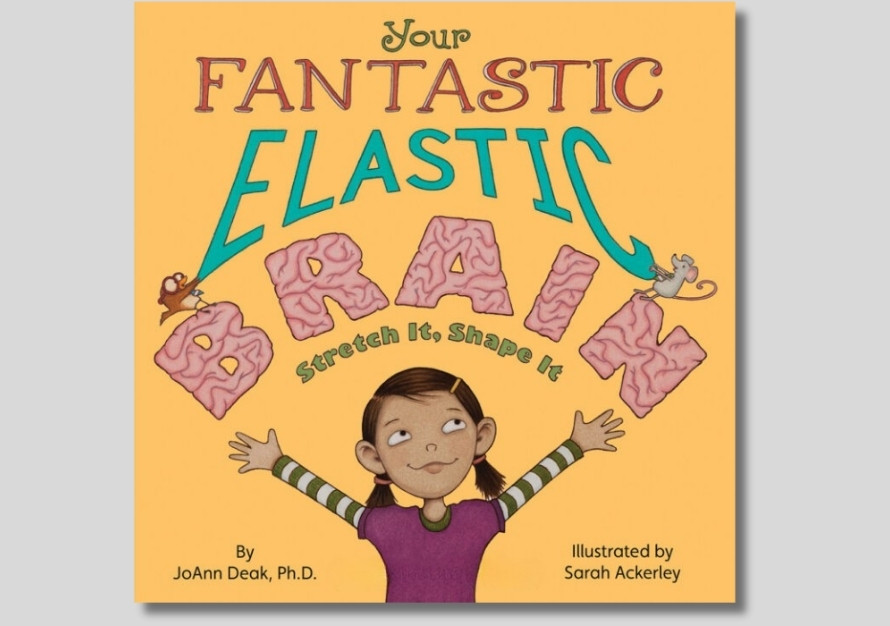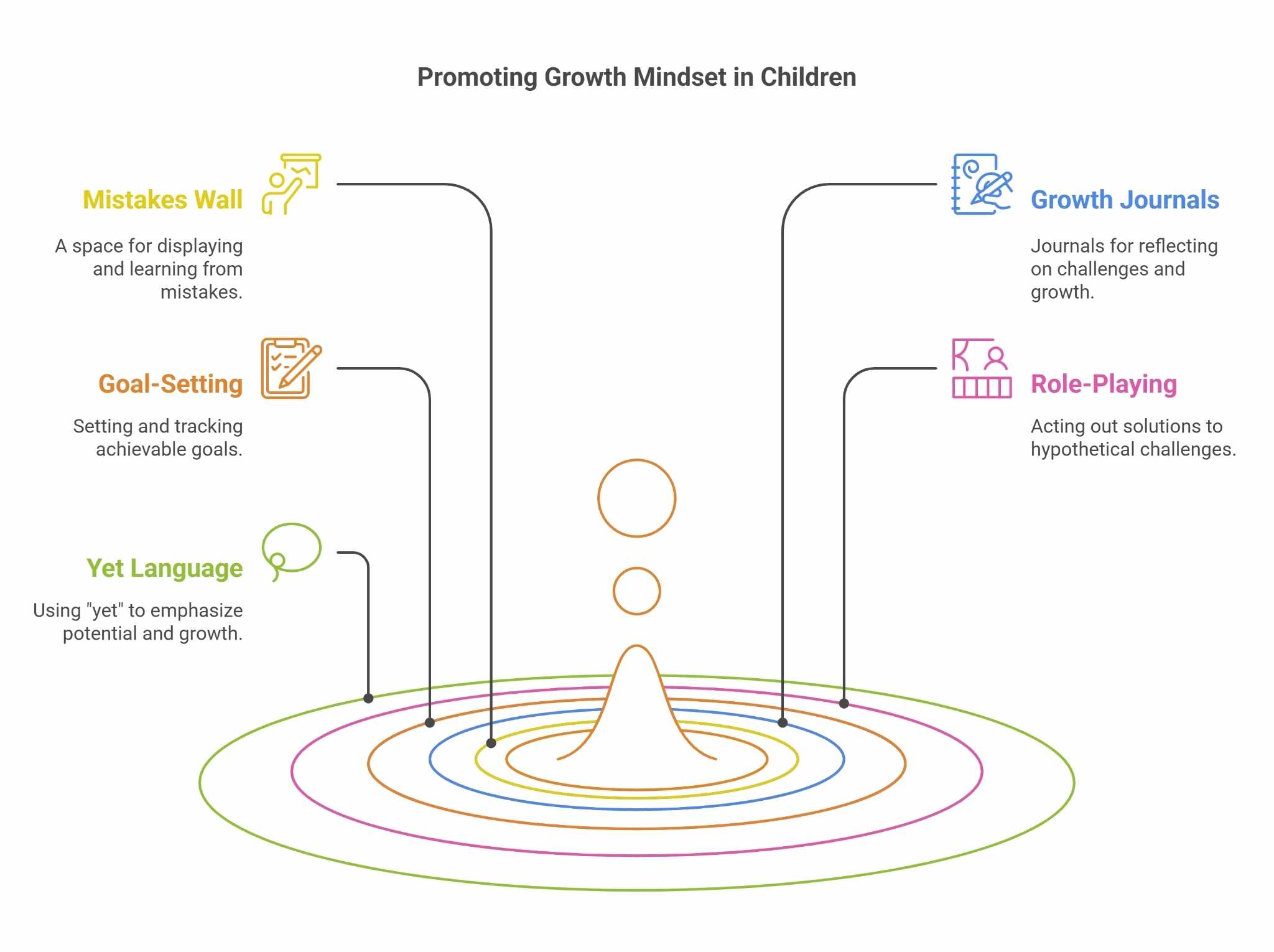Introduction to Growth Mindset
Imagine you are learning to ride a bicycle for the first time. You wobble, fall off, and skin your knee. A fixed mindset might tell you, “I am just not good at cycling, and I never will be.” In contrast, a growth mindset reminds you that everyone starts as a beginner, mistakes are part of learning, and improvement comes with persistence and hard work. This simple difference in perspective can significantly influence how individuals—children included—approach challenges in life.
The concept of growth mindset was popularized by psychologist Carol S. Dweck in her book Mindset: The New Psychology of Success. Dweck’s research demonstrates that people with a growth mindset believe abilities and intelligence can be developed through dedication, practice, and resilience. They view mistakes as opportunities to learn rather than as definitive signs of failure. Conversely, those who hold a fixed mindset see talents as static traits—someone is either “naturally” good at something or they are not.
For children, embracing a growth mindset early in life has profound implications. It can shape how they deal with setbacks, approach academic challenges, and handle social and personal hurdles. Children who learn to persevere despite difficulties tend to be more motivated, confident, and better equipped to adapt to new or uncertain situations. One powerful way to cultivate this perspective is through growth mindset books for kids, which use engaging stories and illustrations to show characters persevering, learning, and ultimately succeeding because they believe in the power of “yet” (i.e., I can’t do this yet).
Throughout this article, we will discuss the benefits of a growth mindset in more detail, explore some of the top growth mindset books for kids, suggest fun activities to reinforce these lessons, and offer practical tips for parents looking to nurture this perspective at home.
Benefits of Developing a Growth Mindset
a) Increased Resilience
Children with a growth mindset often handle failure more gracefully. Instead of seeing setbacks as an endpoint, they see them as stepping stones to success. For instance, if a child struggles with math problems, they are more likely to keep trying different strategies rather than conclude they are “just bad at math.” Over time, this approach fosters resilience, helping them bounce back quickly from disappointments in and out of school.
b) Enhanced Motivation
When children believe they can improve with practice, they become more motivated to put in the effort. This persistence often leads to a cycle of positive reinforcement: as they practice, they get better, which makes them even more driven to continue working. Over time, the rewards of seeing tangible progress further fuel their motivation and encourage them to take on increasingly challenging tasks.
c) Greater Confidence
A growth mindset underpins confidence by shifting focus from static ability to the process of learning. Children are less likely to equate mistakes with personal failure, which helps them maintain self-esteem and confidence. Knowing they can develop their skills and intellect over time empowers them to step outside their comfort zone.
d) Lifelong Love for Learning
Instilling a growth mindset at a young age can lead to a lifelong passion for learning. Children realize that education and self-improvement do not end when formal schooling does. Instead, they appreciate the journey of acquiring knowledge and embrace new skills and areas of study with enthusiasm well into adulthood.
e) Improved Problem-Solving Skills
A growth mindset also encourages creative thinking and problem-solving. When kids are not afraid of mistakes, they are more inclined to brainstorm unique solutions. The process of trial and error becomes a natural part of overcoming challenges, leading to more innovative outcomes.

Top Growth Mindset Books for Kids
Introducing growth‑oriented literature at story time can plant seeds of perseverance and possibility. Below are standout titles, arranged roughly from preschool to early middle‑grade reading levels, along with quick takeaways parents and educators can share:
1. “The Dot” by Peter H. Reynolds

In this charming picture book, young Vashti believes she cannot draw. Her teacher challenges her to make a single dot on a piece of paper and see where it takes her. As Vashti begins to push herself creatively, she not only discovers her own potential but also inspires another young artist. “The Dot” beautifully illustrates how one small action and a willingness to try can lead to significant self-discovery.
2. “Ish” by Peter H. Reynolds

Another gem from Peter H. Reynolds, “Ish” follows Ramon, who loves to draw—until he faces criticism that makes him doubt his talent. This book champions the idea that creativity and passion do not have to meet an arbitrary standard of “perfection.” Instead, growth and artistry lie in the process itself, reminding children that mistakes are valuable parts of creative exploration.
3. “Giraffes Can’t Dance” by Giles Andreae

Gerald the giraffe dreams of dancing, but his long legs and knobby knees make him feel awkward compared to other animals. A little encouragement from a friendly cricket helps Gerald discover his own rhythm. This story is a powerful metaphor for how unique abilities can flourish when we find the right perspective and believe in ourselves.
4. “Your Fantastic Elastic Brain: Stretch It, Shape It” by JoAnn Deak

A more science-based children’s book, “Your Fantastic Elastic Brain” teaches kids about the brain’s capacity to grow and adapt. It covers concepts like neurons and synapses in simple terms, reinforcing that learning new things literally shapes our minds. This knowledge can be especially empowering for kids, as they realize each challenge or new skill strengthens their brain.
5. “After the Fall (How Humpty Dumpty Got Back Up Again)” by Dan Santat

This creative twist on a classic nursery rhyme explores Humpty Dumpty’s journey after his great fall. Terrified of heights, he struggles to face his fear and climb again. The beautiful illustrations and heartfelt message emphasize the importance of courage, resilience, and determination.
6. “Rosie Revere, Engineer” by Andrea Beaty

Rosie dreams of being an engineer but hides her inventions out of fear of failure. When her aunt teaches her that flops are part of the invention process, Rosie gains confidence. The playful rhymes make the story entertaining while subtly reinforcing themes of perseverance, creativity, and the acceptance of mistakes.
Each of these books illustrates the journey of a character discovering that abilities develop through effort, creativity, and a willingness to fail forward. Reading these stories allows children to see relatable characters who experience doubt, frustration, and eventual triumph. The message that emerges: Growth is possible when you keep trying, ask for help, and learn from mistakes.
Engaging Activities to Promote Growth Mindset in Children
In addition to reading growth mindset books for kids, parents and educators can reinforce these concepts with hands-on activities. Here are some engaging ways to help children internalize the principles of perseverance, curiosity, and self-belief.
- The “Mistakes Are Proof You Are Trying” Wall
- Create a bulletin board or a section on a wall where children can display their “mistakes” or “flops” in schoolwork, artwork, or personal challenges.
- Encourage them to note down what they learned from each mistake.
- This visual reminder helps normalize mistakes as part of the learning process and fosters healthy discussions about how to improve or try again.
- Growth Mindset Journals
- Provide each child with a journal to record daily or weekly reflections on challenges they faced and how they overcame them.
- Younger children can draw pictures, while older ones can write short paragraphs about what they learned.
- Over time, they will see how their thinking and problem-solving skills evolve, reinforcing the idea that learning is an ongoing journey.
- Goal-Setting and Progress Tracking
- Help children set specific and achievable goals—for instance, learning a new word each day or practicing a musical instrument for 15 minutes.
- Use a chart or checklist to track daily progress.
- Celebrate small milestones, emphasizing that each step forward is valuable progress.
- Role-Playing Challenges
- Present hypothetical obstacles, such as “Your puzzle is missing a piece—what do you do?” or “You spilled paint on your art project right before class ends.”
- Ask the child to act out different solutions, focusing on how to maintain a positive attitude.
- This playful setting allows them to experiment with strategies for real-life setbacks.
- Encourage “Yet” Language
- Incorporate the word “yet” when children say, “I can’t do it.”
- Prompt them to say, “I can’t do it yet,” reinforcing the idea that their current inability does not define their future potential.
- This small shift in language can significantly impact their mindset and resilience over time.

Tips for Parents to Foster a Growth Mindset in Kids
Parents play a pivotal role in shaping their children’s perspectives on learning, failure, and achievement. Here are practical tips to ensure that home environments support the development of a growth mindset.
- Praise Effort, Not Just Outcome
- Instead of focusing solely on grades or winning a game, praise the child’s persistence, creativity, or teamwork.
- Statements like “I’m proud of how hard you worked on this puzzle” or “You really focused on practicing your handwriting this week” reinforce the value of effort over innate talent.
- Lead by Example
- Parents can model a growth mindset by sharing their own challenges and demonstrating how they overcome obstacles.
- Talk about a time you tried something new and struggled at first, highlighting what you learned in the process.
- Normalize Struggle and Failure
- Encourage open conversations about tough moments, stress, or mistakes rather than hiding or denying these experiences.
- Emphasize that everyone faces setbacks, and it is our response that defines us.
- Encourage Curiosity and Questions
- When children ask questions, praise their curiosity and guide them to discover the answers.
- Let them explore, experiment, and even fail in safe environments. This fosters independent thinking and problem-solving skills.
- Set Realistic Challenges
- Provide tasks that are slightly beyond a child’s current skill level.
- If tasks are too easy, they may lose interest, but if they are too difficult, frustration may overshadow learning.
- Gradually increase the difficulty to keep them engaged and show them the tangible progress they are making.
- Celebrate Small Wins
- Every new skill, no matter how minor, is a building block of confidence.
- Celebrations do not have to be extravagant; a high-five or a heartfelt compliment can be enough to highlight a child’s achievements.

Conclusion and Recap
Helping children develop a growth mindset is one of the most impactful gifts parents, educators, and caregivers can provide. By introducing the concept of growth mindset books for kids, incorporating real-life examples, and creating fun, interactive activities, adults can empower children to see themselves as capable learners whose abilities expand with practice and perseverance.
- Growth Mindset Overview: Children who embrace the belief that their intelligence and skills can grow tend to be more resilient, motivated, confident, and open to new ideas.
- Benefits: A growth mindset fosters lifelong learning, greater problem-solving abilities, and a healthy approach to challenges.
- Recommended Books: Titles like “The Dot”, “Ish”, “Giraffes Can’t Dance”, and more offer relatable stories that show characters overcoming obstacles and learning to appreciate the value of effort.
- Engaging Activities: From journaling to role-playing setbacks, these activities make the growth mindset philosophy hands-on and tangible for young learners.
- Parental Tips: Praising effort over results, modeling positive behavior, and setting realistic challenges all contribute to an environment where learning and mistakes are welcomed as part of the journey.
Ultimately, nurturing a growth mindset requires consistency, patience, and a willingness to celebrate both the peaks and the valleys of a child’s learning process. The message that mistakes are part of growth is a foundational principle that will serve them for the rest of their lives, driving curiosity, encouraging perseverance, and reinforcing the simple but transformative idea that they can always become better at something with dedication and time.
By regularly reading growth mindset books for kids, engaging in stimulating activities, and fostering supportive home and classroom environments, adults can play a crucial role in shaping how children view themselves and the world. With each new challenge embraced and each small success recognized, children gain the confidence to dream bigger and tackle obstacles head-on—knowing that if they put in the effort, their abilities will continue to evolve and flourish.





